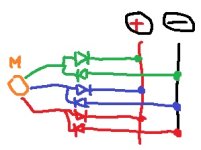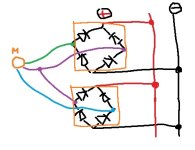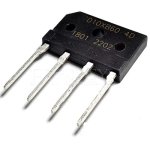Squilt
100 mW
Can you charge a battery with a BLDC motor being spun by a gasoline engine without any filtering after rectification? If you rectify the 3 phase output, and select the correct motor kv, could you just hook that up to a battery? As long as the peak voltage in the ripple is lower than the maximum charge voltage, and the engine is weak enough that it can't supply more than the maximum charge current of the battery, I don't see why not. But I'm finding very little on the topic. I saw a review study on lithium batteries being charged by unfiltered sources and the differences in cell degredation were statistically insignificant. And they tested at 10-100hz. The ~150khz rectified output coming from the bldc motor at ~4000 rpm should be even less distinguishable from DC from the battery's perspective.
I'm mentioning LiFePO4 specifically because they can charge at a significantly higher rate than LiCoO2, so if this setup charged at lower c rates, there's even less risk of battery damage.
I'm mentioning LiFePO4 specifically because they can charge at a significantly higher rate than LiCoO2, so if this setup charged at lower c rates, there's even less risk of battery damage.




